 Your new post is loading...
 Your new post is loading...
Brandless, a company which can best be described as an online hybrid of Trader Joe’s and Ikea’s kitchen section, just raised a $35m Series B to be the “Procter & Gamble for millennials.”
Their site launched yesterday, and is already selling everything from colanders to quinoa puffs — all for a flat fee of $3 per item.
And they’re doing it all without a “brand”…or are they?
Fighting the “false narrative” of consumption
Created in 2016 by entrepreneur Ido Leffler and Sherpa Capital partner, Tina Sharkey, Brandless has raised almost $50m thus far on the bet that younger consumers don’t care as much about brands as big CPG companies would like investors to believe....
BRANDED CONTENT: A SHORTSIGHTED CON
But branded content isn't a long game. There are several reasons why. The first issue is intent. The essence of branded content is deliberately blurring the line between editorial content and advertising. Hiding your true colors is never a good idea. Another issue is the logic behind branded content itself. It’s misleading to use a totally different set of qualities—good stories—to sell a product that has intrinsically nothing to do with these qualities. Hiring a top filmmaker won’t improve the quality of your energy drink. Brands cannot deliver what they advertise. Shoes or coffee can never live up to their brands’ promises—they are just shoes and coffee. You could even say that the better the stories, the more dishonest the companies are being.
A camouflage strategy also complicates an already too complex world driven by hidden agendas. Even well-informed people who are able to both enjoy branded content and take it with a grain of salt will subliminally become accustomed to the new branded content standard—not to mention more vulnerable groups such as kids and adolescents. And what about the stories no one wants to hear, stories incapable of selling something? People are more likely to follow a happy, undemanding brand instead of bonding with real people and real-world problems. A brand will never ask you for help. It won’t confront you with difficulties or opposing views....
Earlier this month, Uber unveiled a new look, including, among other things, a new app logo. In a complete departure from its original icon featuring a stylized “U,” the new icon is a non-distinct image of a square embedded in a circle (in rider apps) or a hexagon (in partner apps).
According to Uber, the square represents the bit (as in the basic unit of information in computing) — a concept central to Uber’s business philosophy.Uber argues that its new look would “…provide consistency, highlight information and make our brand easy to recognize.” While Uber’s new logotype and website design might be aligned with this goal, its new app logo is not; the new logo is far less recognizable as representing the Uber brand than the one it replaced....
A few well-chosen words is often all that is needed for a consumer to recall a favorite brand. But today, marketers and advertisers tend to rely on visual cues -- a font, a color, a spokesperson, or even an icon -- to inspire.
Consider this: What phrase do you associate with Nike? Would the brand symbolize the same attitude without their famous "Just Do It" tagline?
There is power in right words. But if you still don't believe me, take our quiz below. Can you guess the brands behind these famous taglines and slogans? And how do these phrases change the way you think about each company?...
These days, we are constantly being sold products and experiences but now, companies are getting more trixsy.
...Over at AdWeek, David Gianatasio writes that advertising and television shows (and music videos) are getting more integrated by the day, especially since consumers are so good at tuning out what we don’t want to hear. When was the last time you clicked a banner ad or a sponsored tweet or Instagram post? Never, unless it was by accident and then you were pissed about the seconds you'd never get back.
In response, advertising agencies are finding new ways to woo us with funny commercials or, say, placing their products in the middle of Top Chef, instead of, say, having Halle Berry mention the brand name of her lipstick on the Today Show....
Perhaps we don’t have that much in common. Ah, but we do. Personal brands are we. Our agendas may differ—better job, more clients, book sales, or (your goal here)—but we seek the same things: recognition, respect, influence and success.
You, my friend, are a brand.
A photographer. Life coach. Presentation expert. Alternative energy entrepreneur. Website developer. Skin care clinician. These are six simplified profiles of clients who have hired me recently to help them create more effective online marketing by developing their personal brand....
What if the advertising industry were to take immediate action henceforth and stop making advertisements as of today? Finally, shoppers will be able to decide where to shop and what to buy in a clean undisturbed, commercial-free universe.
Several studies have been conducted to find out people's attitude towards advertisements. Unsurprisingly most of the results reveal a mild to extreme negativity towards advertisements. What if the advertising industry were to take immediate action henceforth and stop making advertisements as of today? Marketing executives value their customers and their customers value their favorite brands. However, as research shows a growing negativity toward the ad industry, a world without advertisements could become desirable.
An alarm rings to wake you up, the television switches on and programs stream past without a single disruptive advertisement. The newspaper lies open on the kitchen table brimming with articles line to line, devoid of the advertisements that provoke such a strong irritation within you. No more discounts, no more coupons, just pure media content. This is good news for the millions of banner blinds. There will be no more banner and display ads suggesting brands you might need as if the ad industry knew what you were in need of....
If you’re a brand strategist, you have a point of view, an agenda, and a need to influence. You’re an activist for your brand. Today, brands must be seen as experts, and we claim that title through content marketing, which means producing content that informs your buyers and keeps them apprised of news and trends. Which makes content marketers journalists too, and with that, comes responsibility...
If you are looking to purchase a PC what does come to your mind? HP, Dell. That’s because they have build a Personal Brand around their products. Similarly as a blogger or a business that blogs, you need to build a brand around your blog. Readers should be able to refer your blog if something comes up related to your nice or expertise. Remember to get Good Name for Blogs and also ensure they are Professional Blog Names even if its for your personal or business blog. 5 Blog Branding Actions That Build A Good Brand There are various things that you can do as part of your blog branding campaign, remember to add the following 5 Personal Branding Blogs actions to your campaign to build a good brand....
Recent research conducted by the Council of Public Relations Firms reveals that there may be an even stronger relationship between brand equity and corporate reputation than previously thought. An analysis of 50,000 consumers showed that when these two strategies are combined, the effects are stronger than the individual power of each. These results have a big impact for marketers. They suggest that by combining brand efforts and corporate reputation efforts, companies can achieve better results with respect to things such as purchase consideration and recommendation.... [Interesting study worth noting by both marketing and PR ~ Jeff]
|
Traditional advertising went after “share of mind”–the idea was to get you to associate a brand with a single idea, a single emotion. Volvo: safety. Jaguar: speed. Coke: happiness. The Economist: success. Bang, bang, bang, went the ads, hammering the same idea into your mind every time you saw one. Advertising briefs evolved to focus the creatives on a single USP and a single message. Tell them we’re the Ultimate Driving Machine. Tell them in a thrilling way. It worked when you saw ads infrequently on television, in a Sunday magazine, or on a billboard on your morning commute. It hasn’t worked online. Audiences have stopped engaging with advertising. Big brands like Pepsi and P&G have slashed investment in Facebook spending. The agencies’ response has been to create new formats of ads that take over a page, dominate our mobiles’ screens, and generally scream at us. And when somebody screams at you for long enough, you put in earplugs and ignore them. Or, in the case of the online world, you install an ad blocker, as much of the U.K. population has now done. Yet there are many brands online that people don’t want to block. We asked over 5,000 people around the world to tell us about the brands whose content they actively sought out, then analyzed what those brands did. The results were surprisingly consistent. Popular brands had multifaceted personalities. They could make you laugh, or cheer, or lean forward and take notes. They’d stopped hammering away at a share of mind, and were expanding to achieve a share of emotion....
Since 2012, Cohn & Wolfe has studied authenticity as a guiding principle and business practice. Each year, our research reveals more insight on the strategic power of authenticity and its unique opportunity to build reputation.
Cohn & Wolfe has discovered a huge authenticity gap in the eyes of global consumers. With 75 percent of consumers surveyed in 14 markets believing that companies are not open and transparent, it’s clear that brands have a credibility problem.
Our 2016 findings reveal that cynicism towards brands is highest among Western European countries, while high growth / low per capita GDP countries recognize authenticity in brands the most.
Across global markets, approximately one in five consumers finds brands “Open and Honest.” At 23 percent, the US places just above the global average. In Western Europe, a mere 5 percent of consumers in Sweden consider companies “Open and Honest,” while the UK, France, Germany and Spain all match the same low level at 7 percent.
Brazil, while generally higher than Western Europe, is still lower than the US at 19 percent.
Even in China and Indonesia, where consumers are least pessimistic about brand authenticity, only about a third of the population (36 percent and 35 percent, respectively) consider companies “Open and Honest.”
The opportunity for businesses to close this gap is staggering....
Today, you probably know Diet Coke for its silver and red branding—which is more or less how it’s looked since Coca-Cola’s sugar-free alternative first launched in 1982. But starting this month, in a market where diet soda sales are down, Diet Coke is going bespoke, as millions of unique designs are hitting U.S. shelves for the first time as part of a campaign called "It’s Mine."
So for the next several months, no two 12-ounce bottles of Diet Coke will look exactly alike.
"Personalization and customization is a huge trend, obviously," says Rafael Acevedo, group director of Diet Coke in North America. With Coca-Cola’s first major personalization campaign, Share a Coke in 2014, the company put thousands of people’s names onto bottles. The idea was that you’d spot someone’s name and want to buy them a Coke—and it’s an idea that worked, with measurable uptake in both short term sales and longer term brand loyalty. For Diet Coke, that concept got a tweak. "In this case, it’s more personal, "Acevedo says, "to have that sense that Diet Coke is giving you something no one else can have."...
It's the great American pastime.
No, I'm not talking about baseball. Or stuffing your face with apple pie. Or arguing about politics with your family over Thanksgiving dinner. No, I'm talking about the great American pastime of buying stuff.
Unlike those other pastimes, however, which have remained relatively unchanged over the years, the way we buy has evolved considerably. For example ...
In 1914, you might've been tempted to buy a (non-branded) pastry after noticing a delicious smell emanating from the local bakery.
In 2014, you might be tempted to buy a Pop-Tart after seeing a commercial for Pop-Tarts on TV, or after reading an article about Pop-Tarts on The Wall Street Journal website, or after hearing about (or attending) a Pop-Tarts-brandedsummer concert series....
What is so mesmerizing about the Trivago Guy?
One of the most unexpected marketing success stories in recent months has been the ascendance of Trivago, a Düsseldorf-based travel search engine.
Some data from researcher YouGov's BrandIndex shows Trivago has come out of nowhere to become as well-known among travelers as Priceline. Some 29% of 3,200 leisure travelers polled by YouGov recall seeing an ad for Trivago — the same amount as Priceline. Expedia got 19% in the same poll. Tripadvisor, which recently launched a $30 million ad campaign, went from 5% to 15%, which is about half of Trivago's score....
“Companies with great brands conceive of their brands as complete strategic platforms. They identify the key values and attributes that define their brands and then use them to fuel, align, and guide everything they do. Operationalizing their brands in this way produces results because companies aren’t simply expressing or marketing their brands—they’re using them to ignite their organizations and create real business value.
This manifesto highlights seventeen developments that are influencing brand-building today and what great brands are doing about them.”...
CEOs and executives have understood for a long time that a company’s brand is important and goes way beyond just a logo and tagline. But questions about the actual value of the brand have often relegated this vital asset to a fuzzy, feel-good, slightly nebulous item that rarely gets the executive attention it deserves.
It turns out that companies can determine how much a brand is worth. We’ve seen this most recently in the bidding war breaking out for Steinway, which is a brand that transcends time and technology. It has legendary cache, in a way that fabled brands like Kodak or Polaroid did not. We know that strong brands with good reputations have 31% better total return to shareholders than the MSCI World average....
... here’s the truth: branding your business does not have to be complicated, and business branding is not just for the big marketing firms. It’s for every business that wants to carve out a space for itself and leave its mark. Now that we’ve gotten that cleared up, what’s the next step? If your business is new and building a brand from scratch, or if you are reinventing your business brand online, here are 4.5 ways to get a head start...
...The big question that opened the conference: which has more influence on purchase consideration and recommendation, reputation or brand? As new research presented by Robert Fronk of Harris Interactive revealed, the answer depends on what dimension you’re looking at. The Harris study found “excitement,” “quality,” and “outperforms expectations” rating high among brand-centric influencers, while “clear vision,” “strong growth potential” and “good company to work for” mattering among reputational factors. None of that should come as any surprise. The big wow came from Harris’s painstaking cross -tabbing of data. As it turns out, the combination of positive brand equity and positive corporate reputation drives purchase and recommendation to a degree that often far exceeds the sum of parts. The Council packaged it up well as Hidden Harmony, a valuable white paper on the study.... ["Hidden Harmony" is a valuable white paper and important reading for PR, branding and marketing. The most important take is the power of brand equity and reputation working in concert. ~ Jeff]
I'm in Miami this week taking part in the Holmes Report's Global PR Summit and the topic of "Brand Journalism." I know nothing about the subject but no one else does either because it's a made up term that is in the early stages of being defined. Nothing wrong in that, I do it all the time but I try to think of concepts that make sense and this one doesn't make any sense at all.... [Tom Forenski says "brand journalism" is NOT journalism. Is he right? ~ Jeff]
Marty Note
I see the need for rebranding. PR has imploded swept away by search engines and social networks. I can also understand a desire for an attachment to brands. Brands are perceived as the lasting core of marketing. I don't understand the concept of "brand journalists" since journalism is investigative and far ranging and sends shivers down the spines of most CEOs and CMOs I've worked with or for.
Since brands are becoming more social, with much of this new work being done by brand advocates and supporters NOT people with a direct stake (employees in other words), I see a brand champion role that PR experts could help create and shape.
Perhaps the most important idea for our new PR brand marketers to understand is how much flux brands and branding are in. Take a look at this infographic about how brands are "socializing": http://www.scoop.it/t/curation-revolution/p/791811864/branding-is-changing-socializing-your-brand ; Brands and companies are changing rapidly. Here are some important ways companies and brands are changing:
* Brands and companies are becoming publishers. * Brands and companies are becoming curators. * Brands and companies are becoming entertainers (Meetups, Videos, etc..). While "Brand Journalism" may seem dissonant to what brands were and are becoming, brand curator or brand champion is a much needed missing set of marketing skills. PR skills such as building relationships with thought leaders, organizing disparate information into engaging communication, promoting engagement and connecting companies and brands to their supporters wrap around this idea quickly and well.
PR pros could become the brand sherpas of a new more open, engaged and social branding. Brand journalists as a concept just sends shivers down the CEOs and CMOs I've worked with (lol).
Via LPM Comunicação SA, Jeff Domansky, Martin (Marty) Smith
|
 Your new post is loading...
Your new post is loading...
 Your new post is loading...
Your new post is loading...












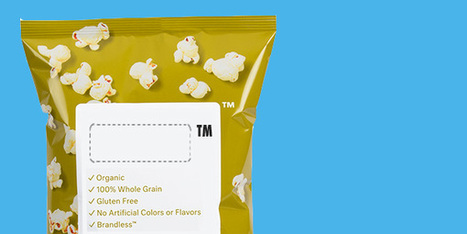





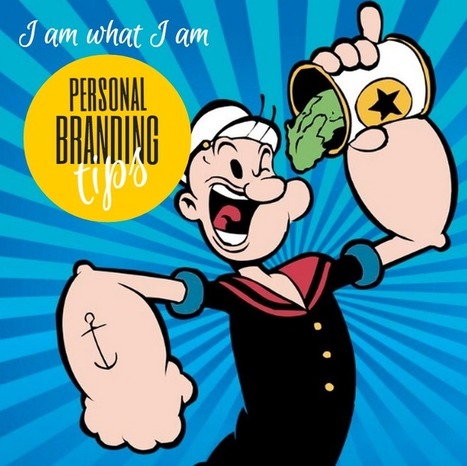




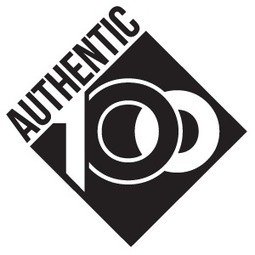
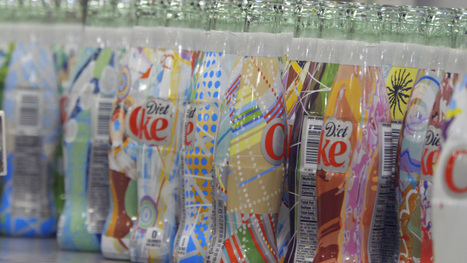
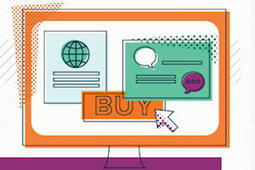












The "brandless" brand that's getting traction with millennials and other consumers.